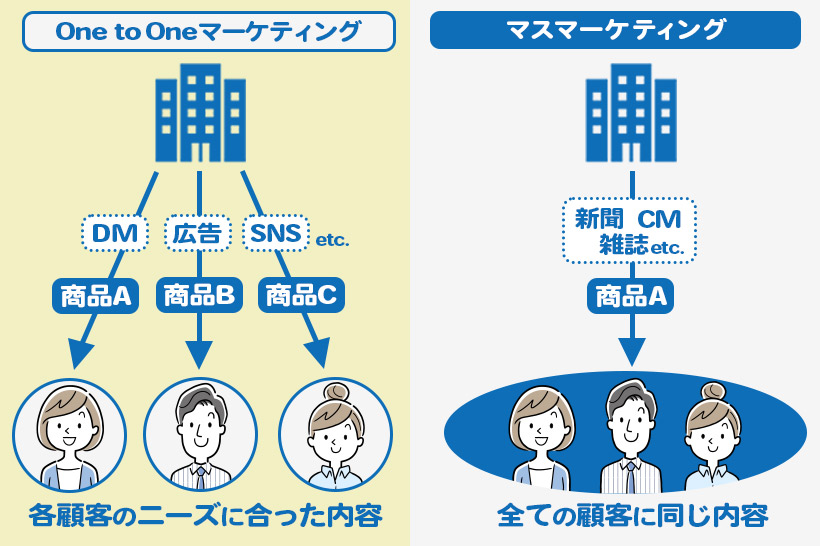In the era of mass production and mass sales that followed World War II, there was no concept of “individual customer preferences” in marketing. With the development of mass media centered on television, marketing in the world was generally directed by producers and aimed at the masses (Marketing 1.0).
It has now evolved from customer-centric marketing (Marketing 2.0) to value-driven (human-centric) marketing to self-actualization marketing (Marketing 4.0).

This time, let’s think about mass marketing, which is the basis of marketing development.
What is mass marketing?
The word “mass” in
mass marketing
means “a gathering without a clear form” or “the general public.” The terms “mass communication” and “mass media” are also used in the sense of something aimed at the masses. As you can see from the meaning of mass, mass marketing refers to carrying out
uniform marketing activities targeting all customers without segmenting (specific grouping) the target customers.
point.
The era of mass marketing is said to have been at its peak from the early 1900s to the 1970s, when inflation due to the oil shock hit the world. Marketing, which had previously been conducted from the perspective of companies (producers), was no longer selling products, and it became necessary to shift the perspective from companies to customers. Antonyms of mass marketing include niche marketing, segment marketing, and one-to-one marketing.

Specific mass marketing methods, advantages and disadvantages

Mass marketing uses the same marketing method for an unspecified number of customers (targets), and is generally characterized by mass promotion based on mass production and mass sales. Although the popularity of promotions has been decreasing in recent years due to the rise of the Internet, the focus is on the four media of mass media: commercials on TV and radio, and advertisements in newspapers and magazines.

Examples of mass marketing usage

Mass marketing is currently difficult to implement due to changes in customer orientation, but Coca-Cola’s mass marketing is a famous example of its use. It originally began with a campaign led by Robert Woodruff, who became president of the Coca-Cola Company in 1923, and adopted the Coca-Cola catchphrase “Anytime, Anywhere, Anybody.” is.
Coca-Cola was the only product targeted for mass marketing. A large amount of promotion (TV and radio commercials, magazine and newspaper advertisements, billboards around town, sponsorship of sporting events, etc.) was used to promote this product. Also, the red vending machines that can be found everywhere in the city symbolize “anytime, anywhere, and anyone.” In Japan, they are installed outdoors, and in Europe and America, they are installed in large numbers indoors. As you know, Coca-Cola has acquired the top market share in soft drinks through mass marketing.

Nowadays, Coca-Cola Company has introduced segment marketing and sells products tailored to customer tastes, such as the diet-oriented Coca-Cola Zero, the sports drink Aquarius, and the health-conscious Soukenbicha. However, the mass marketing that Coca-Cola carried out when it launched the market can be said to be a model of successful mass marketing by a market leader.

summary

◆Mass marketing refers to carrying out uniform marketing activities targeting all customers, without segmenting target customers.

◆The advantage of mass marketing is that if the product you handle is suitable for mass marketing, you can keep all costs down from production to sales, and you can expect to secure large profits and market share.

◆Disadvantages of mass marketing are that the products that can be handled are limited, that customer preferences have become more fragmented and are no longer the mainstream of marketing, and that the number of generations who do not watch TV or read newspapers has increased, making it difficult to utilize mass media. This is something that is becoming more and more common.


